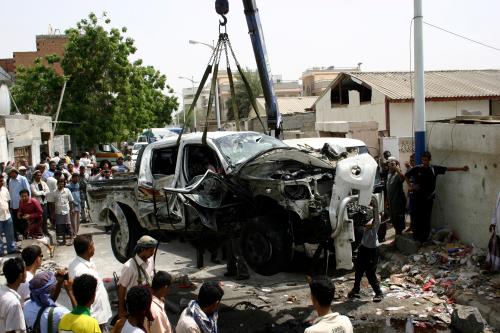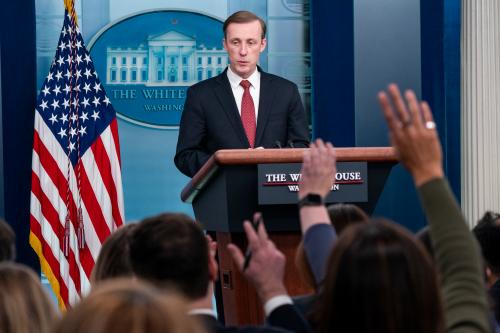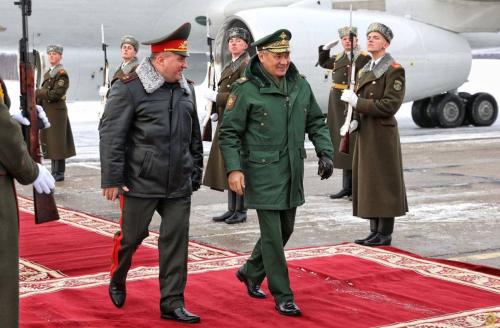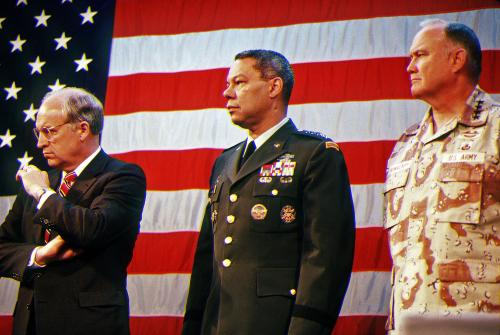I am often asked what it is like to work for the Central Intelligence Agency. I spent 30 years there, both as an analyst and an operator abroad. A new book by Nada Bakos—“The Targeter: My Life in the CIA, Hunting Terrorists and Challenging the White House” (with Davin Coburn, published by Little, Brown and Company 2019)—is one of the best books I know of that addresses the question.
Bakos’ book is an important contribution to our understanding of the intelligence wars that erupted in 2001 over Iraq’s alleged connections to the 9/11 attacks and the George W. Bush administration’s bungled efforts to stabilize Iraq after the 2003 invasion. A former CIA analyst, Bakos had a ring-side seat for that whole sordid chapter in America’s endless wars in the Middle East. She also provides new insights into the hunt for Abu Musaib al-Zarqawi, the Jordanian terrorist who created al-Qaida in Iraq, and ultimately the Islamic State.
One of the most important insights this book offers is that women have been at the heart of the CIA’s war with al-Qaida from well before 9/11. As Bakos writes, women “initially made up the majority of the CIA targeters charged with hunting the most dangerous figures in the most dangerous terrorist organization the United States has ever known.” The agency turned to female analysts more than ever to help track down both Zarqawi and Osama bin Laden; the results speak for themselves.
Bakos grew up in Montana and joined the CIA in 1999. She got an assignment in the office assessing what, if any, connections existed between al-Qaida and Iraq. She chronicles the Bush administration’s constant efforts to push the intelligence community to validate its spurious assertions that Saddam was a party to the 9/11 plot, and the pushback that conclusively established there was no such collusion. She served in Baghdad in the summer of 2003, investigating the Iraqi intelligence service to look for any connections to al-Qaida. She spent endless hours debriefing captured Saddam spies: There was nothing to find. The administration was lying.
The central figure in the narrative is Zarqawi. Born Ahmed Fadil al Nazal al Khalayleh in 1966 in the industrial city of Zarqa—hence his nom de guerre Zarqawi—he was a petty criminal and drug dealer until he was jailed in 1987. In a Jordanian prison, he found Islamic extremism and became an enforcer for a prison gang that espoused militant jihadism. Released from prison, he headed to Afghanistan to join in the end days of the war against the Soviets. He returned to Jordan and was arrested again in 1994 for plotting violence against King Hussein’s government. When the king died in 1999, a general pardon by the new King Abdallah let Zarqawi free, and Zarqawi went back to Afghanistan.
Bin Laden didn’t trust Zarqawi, and held him at an arm’s distance on the other side of the country from al-Qaida’s bases. After the American intervention in Afghanistan, Zarqawi fled west to hide in Iraq and prepare for the U.S. invasion. The Bush administration misleadingly claimed that he was working with Saddam Hussein’s spies. He was supposed to be the missing link. With more granular detail than ever before, Bakos dismisses the linkage. She also shows how the Bush team was slow to recognize the real and deadly threat Zarqawi became to the stabilization mission in 2003. Beginning with the bombing of the Jordanian embassy in Baghdad, Zarqawi relentlessly bombed Iraq into a civil war—with America caught in the middle.
This is an insightful look into how intelligence is collected, analyzed, and produced at the working level. It’s like putting together a jigsaw puzzle but without the box cover, with only most of the edge pieces, and with pieces from other puzzles mixed in randomly. Bakos was a central player in the search to learn more about Zarqawi—a role that after 9/11 was called a targeter, a vital part of the counterterrorism mission.
She also chronicles the bureaucratic rivalries within the CIA and inside the broader war effort, as well as the sexism that made solving intelligence problems even harder. As one of her colleagues called it, “the vortex of stupidity” is a perennial difficulty in large organizations, especially in tense times. Bakos also relates the cost, in human terms, of working intensively and fighting a cruel and sadistic enemy; it takes a toll on officers’ lives.
The book closes with a brief description of how Osama bin Laden was found in Abbottabad, Pakistan in 2011. Naturally the team of CIA targeters was led by a woman.







Commentary
Women and the war on terror: An insider account
July 22, 2019